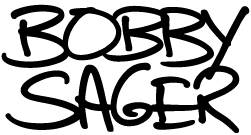BEING HUMAN
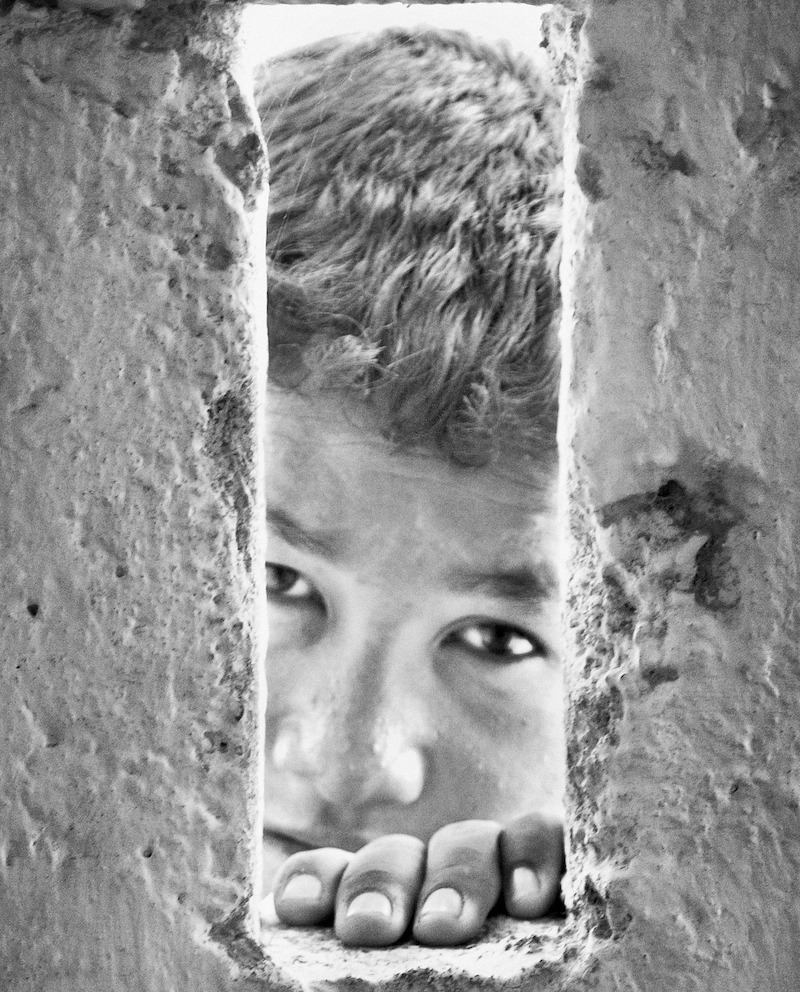
LIVES BORN OF HARDSHIP, PHOTOGRAPHS BORN OF JOURNEY, HUMAN CONNECTION BORN OUT OF RESPECT FOR OUR COMMON DIGNITY.
The exhibition is composed of photographs from four of my books: Invisible Sun [Rizzoli 2019], Beyond the Robe [powerHouse Books, 2013l, MORE (Rizzoli, 2022], and Power of the Invisible Sun [Chronicle Books, 2009].
I’ve spent much of the last twenty years living in traumatized communities around the world while doing the work of my family foundation. I’ve worked as an American in Afghanistan, a white person in Rwanda, and a Jew in Palestine. I met the people in this exhibit during those travels.
The most transcendent moments have come when I least expected them – from sharing in the joys and frustrations of ordinary people’s everyday lives. These photographs were born out of those everyday moments.
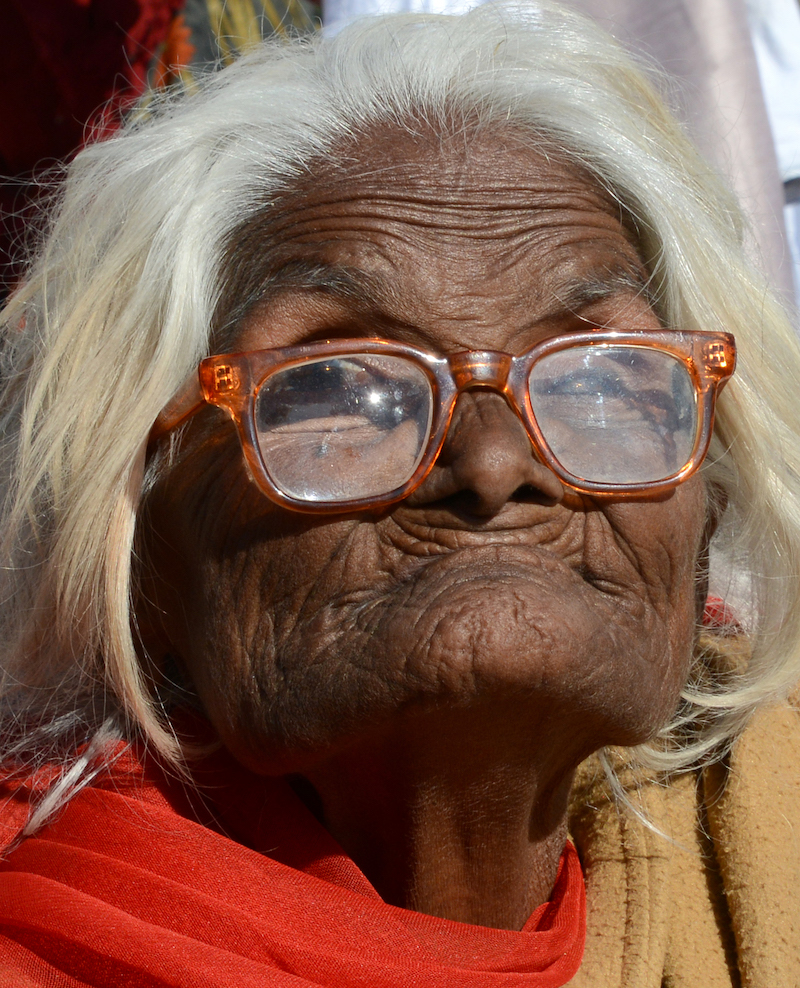
WISDOM CAN COME FROM WHERE WE LEAST EXPECT IT.
We all live in some kind of bubble. Rich people hang out with rich people, artists with artists, old people with old people, and young with young. Sometimes a bubble can be about where you live or how you worship, but because bubbles are invisible it’s hard to know when you’re in one. Going beyond our bubble gives us more perspective on our world and sometimes on ourselves.
When we discount people as too poor, young, desperate, or uneducated we predispose ourselves to think they don’t have anything useful to teach us. In the sea of our hurried, distracted lives how much insight just floats by because we aren’t open to where or who it comes from?
Don’t feel bad for these people. They don’t want our pity. My motivation in bringing them together for you to meet is not so we can say, “Oh, look at those poor people, I want to give them a hug.” Hopefully we will take strength from their strength, feel more thankful in our own lives, and, in return, for that strength and that gratitude, go find ways to give people hope, not by just giving money but by giving something of ourselves.
I hope that this exhibition helps to stimulate an internal conversation about gratitude for the smallest things, kindness for one another, and perhaps a moment of reflection about whether we can do more to help.
Maybe their voices help us to hear our own.
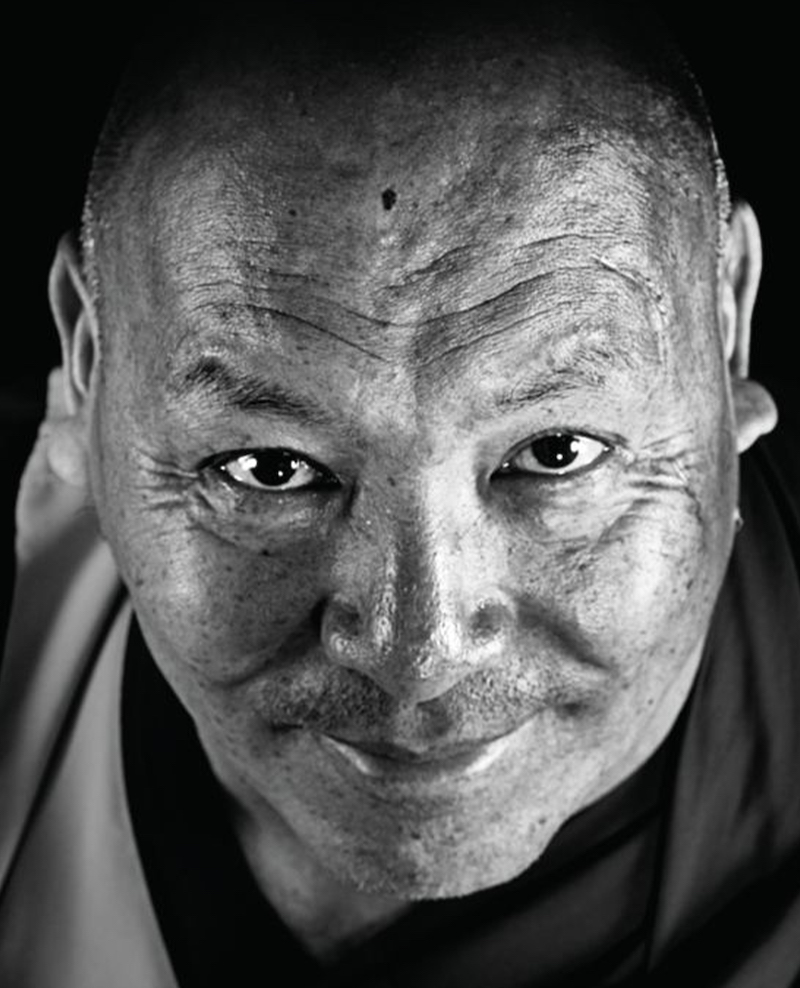
“YESTERDAY I WAS CLEVER, SO I WANTED TO CHANGE THE WORLD. TODAY I AM WISE, SO I AM CHANGING MYSELF.” – RUMI
I chose photographs for this exhibit where the person is staring directly back at us. In that “eyeball-to-eyeball” exchange I hope you feel both confronted and assured. Yes, the world is screwed up, but before we can really help fix it, we must first fix ourselves.
The practice of a Tibetan monk has a lot to do with trying to tame what they call “disruptive emotions. Greed, anger, jealousy, fear, and unfortunately many more. These disruptive emotions keep us from being the best possible human beings.
Tibetan prayer flags are a kind of delivery system for good wishes, protection, and positive intentions. Like the prayer flags, the monks are a delivery system for a worldview that places compassion and interdependence at its center.
Leaders without egos who have a world view that places compassion and interdependence at its center. These are people who we should want to have the greatest possible voice.
By looking at the world through the lens of interdependence, the monks understand that everything we do has a consequence. There is no me and “them”: it’s all “us.” Whether it is a virus, the environment, or the way we treat one another, hopefully we understand more than ever how radically interconnected we are.
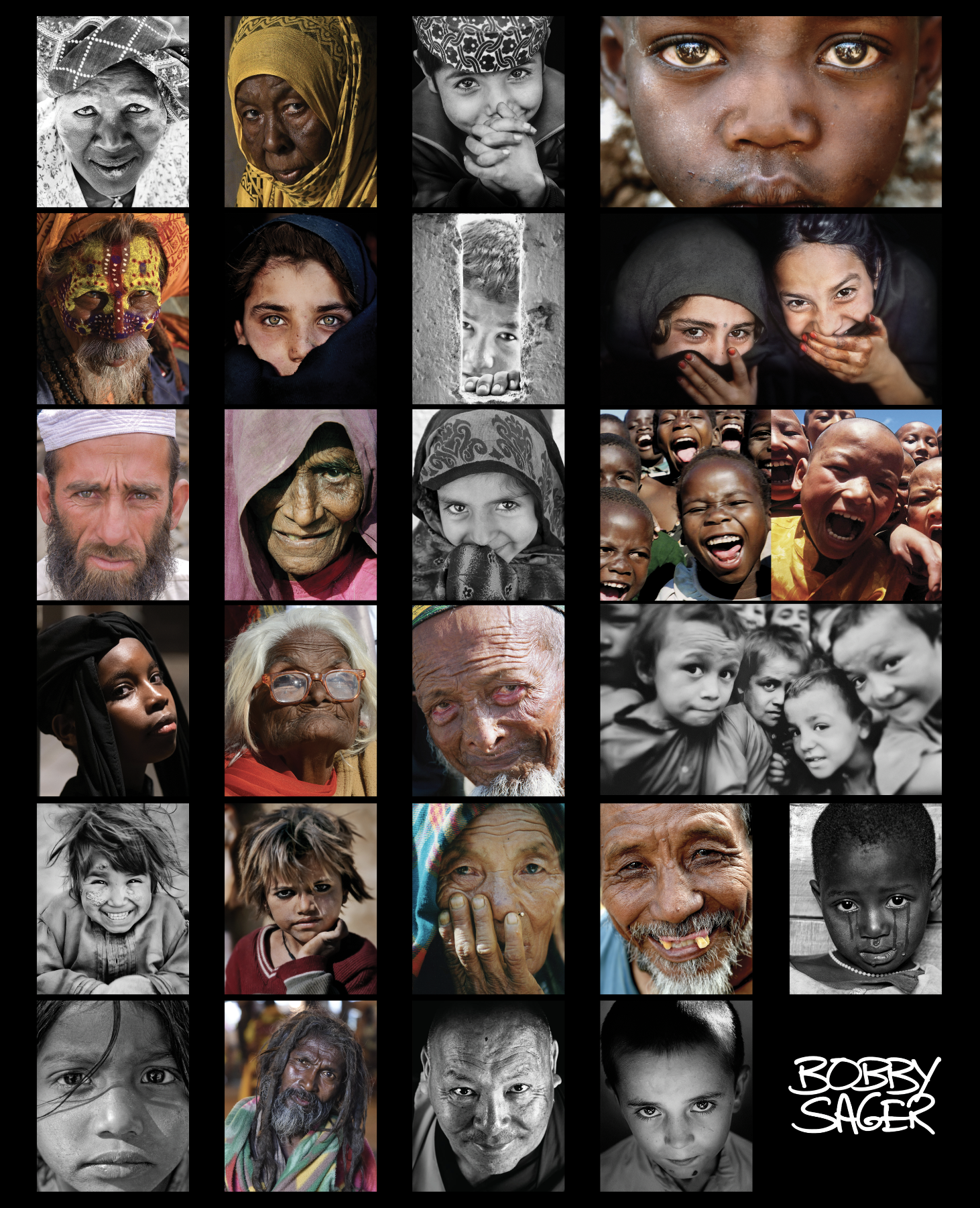
LOOKING INTO THEIR EYES WE ARE REMINDED OF OUR COMMON HUMANITY, VULNERABILITY AND COLLECTIVE POTENTIAL.
The people you are about to meet come from Afghanistan, Syria, Rwanda, Pakistan, Palestine, Nepal, Sri Lanka, Egypt, India, and Tibet. They are Tibetan monks, child soldiers, refugees, and victims of war. They live lives of great struggle – but humble places often produce monumental humanity.
Their lives of hardship gives intensity to their eyes and that intensity gives strength to their voice. By thinking about their challenges, we have more context about our own.
After COVID, tribalism, racism, populism, extremism, lying politicians, and “us vs them” we need to find our way back to each other and to ourselves. We have a very long road to travel – the people in this exhibition can be our guides.
Thank you to the people whose photographs are here, even though you are some of the most anonymous people on earth, looking into your eyes we are reminded of our common humanity, vulnerability, and collective potential.
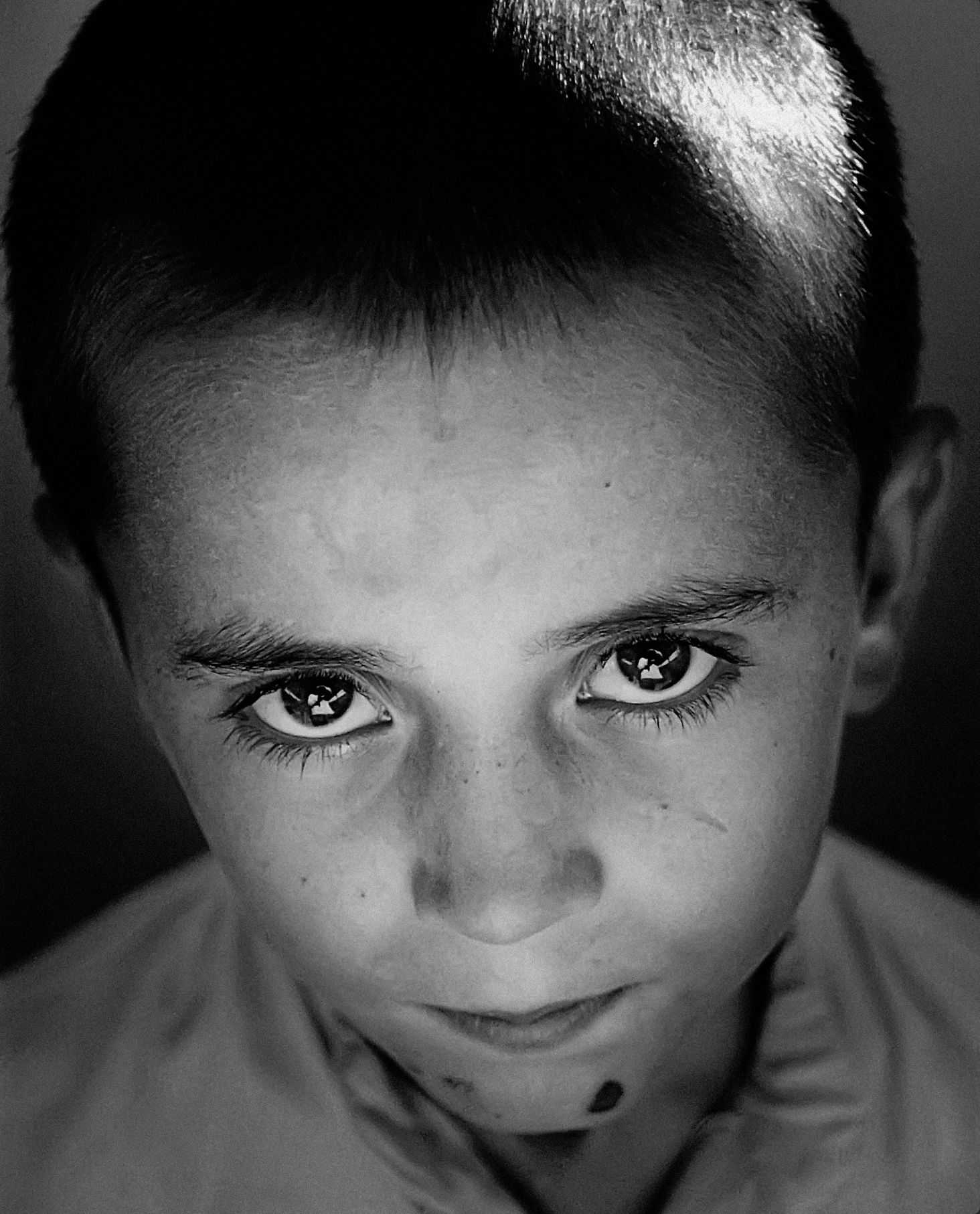
WE HEAR THEIR VOICES THROUGH THEIR EYES.
It’s impossible to truly look into someone else’s eyes unless we first let them look into ours. Vulnerability is a strength.
Far from being an impediment to engaging with others, I use the fact that the camera is there as a way to start a conversation and make a connection with people. When I sometimes make a funny noise with my mouth and people react with a laugh or a smile, that’s not the end of the moment-it’s just the beginning.
If there were only a chuckle, then the whole interaction would be reduced to nothing more than a party trick. But when my vulnerability and openness give way to a growing light in their eyes, the moment shifts to a more primal, tender, and most of all authentic place.
Real connection is not about making someone laugh; it is about making someone feel like you care. Not as an object to be photographed, but as a flesh-and-blood human being with dreams, fears, dignity, and incomprehensible challenges.
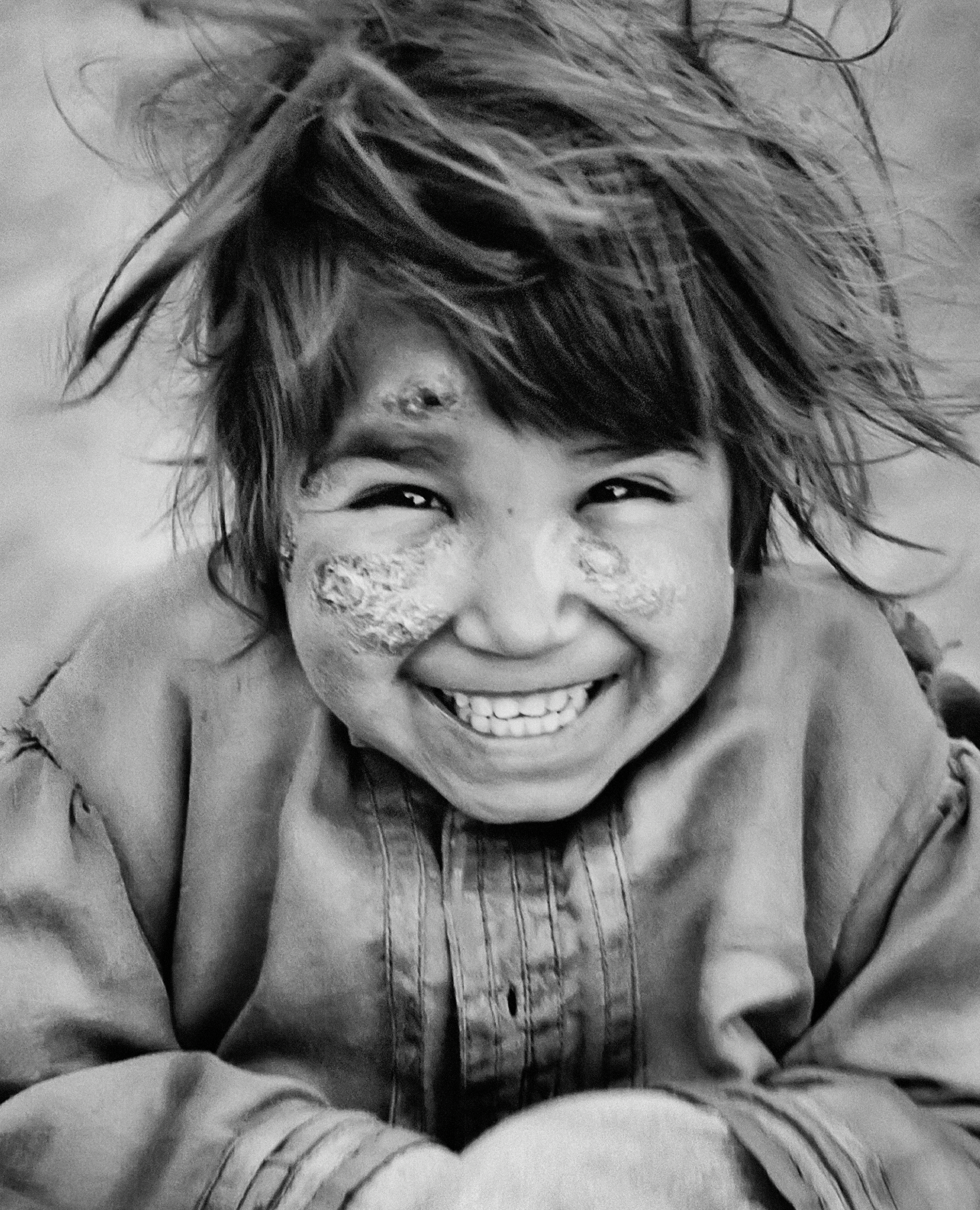
WHAT DID YOU AND I GET PISSED OFF AT TODAY? HOW DOES IT COMPARE WITH HER DAILY CHALLENGES?
This girl’s face was burned by an explosive a month after September 11. Her eyes have seen so much destruction and know so much pain, yet the light still shines through.
Even in the midst of mind-numbing destruction, the light in her young eyes is a gift to us, something to ignite our optimism and perhaps even our positive action. She nourishes herself with gratitude for the smallest things, yet we take so much for granted in our everyday lives.
It’s hard to be happy unless you’re thankful, and it’s difficult to be thankful without some context to truly appreciate what we have. These people provide context not by comparison between what we have and what they don’t, but rather by the inspiration we can get from seeing how full a life can be lived with so little.
Our collective pandemic experience makes us realize more than ever the critical things that we had grown to take for granted -a hug, breathing, friendship, freedom, travel, and so much more. Sometimes it takes losing something to appreciate how awesome it is. Turns out that the “biggest” things in life are almost always small.
